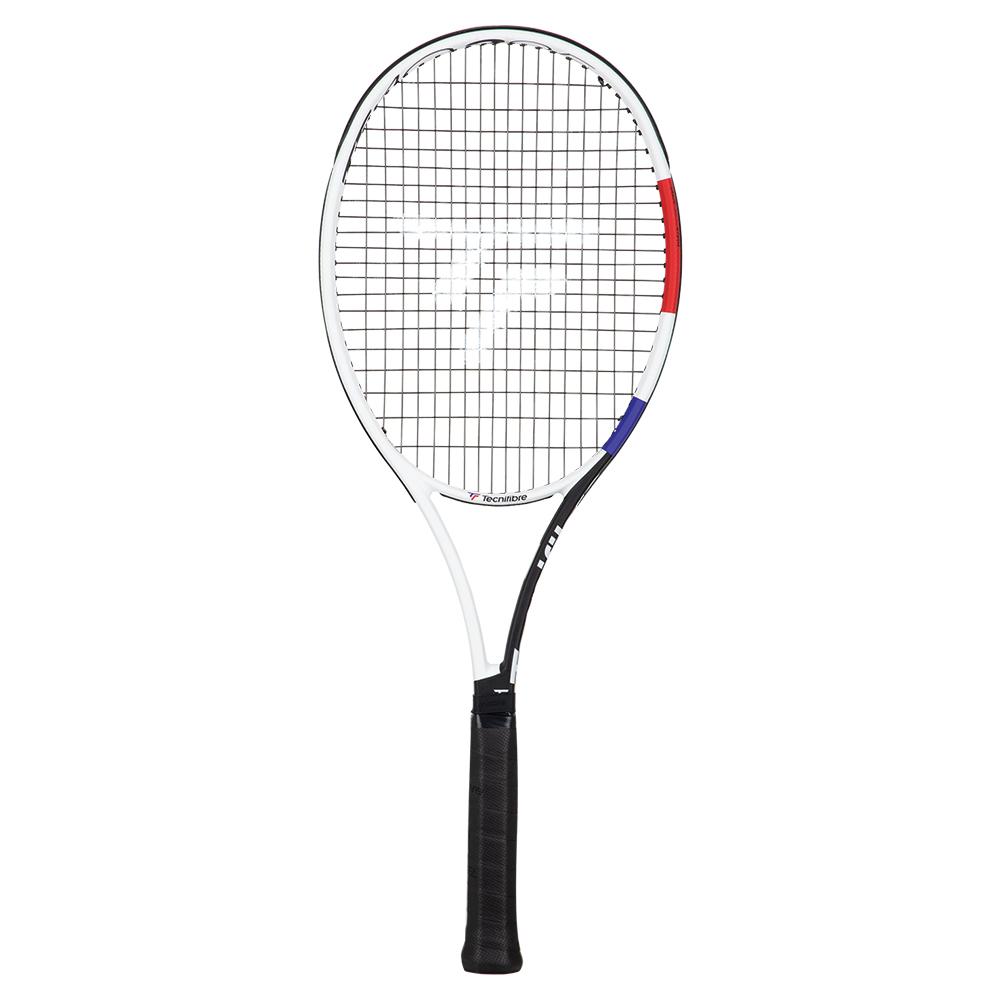Racquet Specs |
|

Intro
With 40 years in business, Tecnifibre is celebrating in a big way. With new design language coming from their partnership with Lacoste, they’ve also introduced a brand new high performance racquet line. The TF40 315 is the heaviest model in this new serious designed with the advanced player in mind. It uses Dynacore XTC, a blend of graphite, polyester and alloy fibers, to improve feel, flex and response. The frame also uses the new Xtense BG grommets, which use wider string channels and longer eyelets for an enhanced sweet spot and smoother string installation. Having used several past Tecnifibre 315 models, I was excited to see how this latest offering would perform on court.
Groundstrokes
Off the ground, the TF40 315 was very similar to its lighter 305 sibling. The 21.7 mm flat RS Section beam provided excellent control and response. Even though this model had a heavier 11.8 oz strung weight than the 305, it felt fast through contact thanks to its more headlight balance. I had no trouble cranking up the racquet head speed from either side on the baseline. The sweet spot felt generous for an 18 x 20 and the power level was easily controlled, allowing me to take big swings with minimal fear of over hitting. Directional accuracy was excellent with the TF40 315. It had outstanding precision and I was consistently able to pick aggressive targets around the court in rallies. The extra weight in this model offset the headlight balance and kept the stability very solid. I had no trouble absorbing big shots and redirecting them. This frame lent itself to flatter hitting. While it was fast enough to whip through contact, it really excelled at flattening out and hammering mid court balls. I made quick work of anything opponents left short for me to jump on. Spin production was on par with the 305 model for me. It didn’t offer as much margin or variation as a more open string pattern would have, but overall I found enough spin to minimize my risk of hitting into the net.
Volleys & Serves
At net, the TF40 315 was a classic frame lover’s dream. It had just enough power to finish anything left high, but really excelled with its speed and feel. The extra headlight balance made it incredibly easy to maneuver and I stayed in front of virtually every volley exchange. The outstanding control allowed me to put volleys anywhere I wanted to, creating impressive angles and volleys deep into the corners of the court. I also found more than enough feel for executing a variety of touch and drop volleys. The TF40 315 consistently encouraged me to finish points at net with its incredible performance and reactions. I had more fun coming in and creating at net than trying to slug it out in baseline rallies with this racquet.
Serving with the TF40 315 still provided me with a host of options. I found plenty of pace and court penetration on my first serve and won plenty of free points hitting flat. I did notice the higher static weight of this model most on serve. It didn’t feel as effortless to accelerate through the top, despite its headlight balance. I was still able to generate enough speed to put solid pace on the ball, it was just required a bit more focus in the ending stages of matches. The degree of accuracy the 315 had on serve was outstanding. I had no trouble hitting every area of the box and painted my fair share of lines on serve. This variation made it difficult for my opponents to predict my serve. The kick serve was a bit less effective as the tighter 18 x 20 pattern didn’t produce quite as much jump on the ball. However, my slice serve proved to be nasty. The ball cut low and wide through the box, and opened up the court for me to immediately go into attack mode.
Feel/Comfort
Much like the TF40 305, the 315 was a dynamic mix of modern and classic response. Its more flexible nature provided great ball pocketing and I felt I could hold the ball on the string bed. Feedback on contact was crisp and clean, never overly muted or mushy. I could feel the direct response of the frame a bit more on the outer edges of the hoop, but the string bed was largely uniform and clean in its response to contact. Even strung with full poly in the 18 x 20 pattern, I didn’t experience any comfort problems. Players should be able to experiment with string materials, tensions and gauges and come up with a comfortable setup for this frame easily.
Overall
The heaviest model of the new high performance frame line from Tecnifibre is a winner. It boasts easy to control power, incredible maneuverability and responsiveness that make it deadly from anywhere on court. While it may be a bit heavy for some, strong players with solid head speed will appreciate the stability, feel and control it offers without the need to customize. The Tecnifibre TF40 315 should be at the top of the list for any skilled player who likes to play aggressively and finish points in a variety of creative ways.
About the Reviewer: Matt Locke formerly served for 3 years as the Junior Programs & Development Coordinator for USTA-Idaho. He is a PTR certified coach and is an active USTA 4.5 League and Tournament player.


